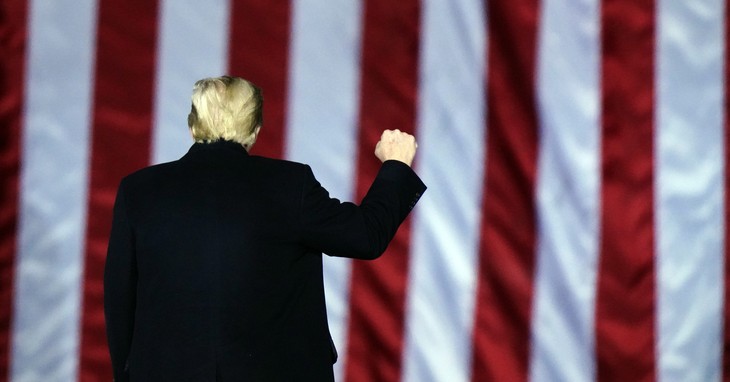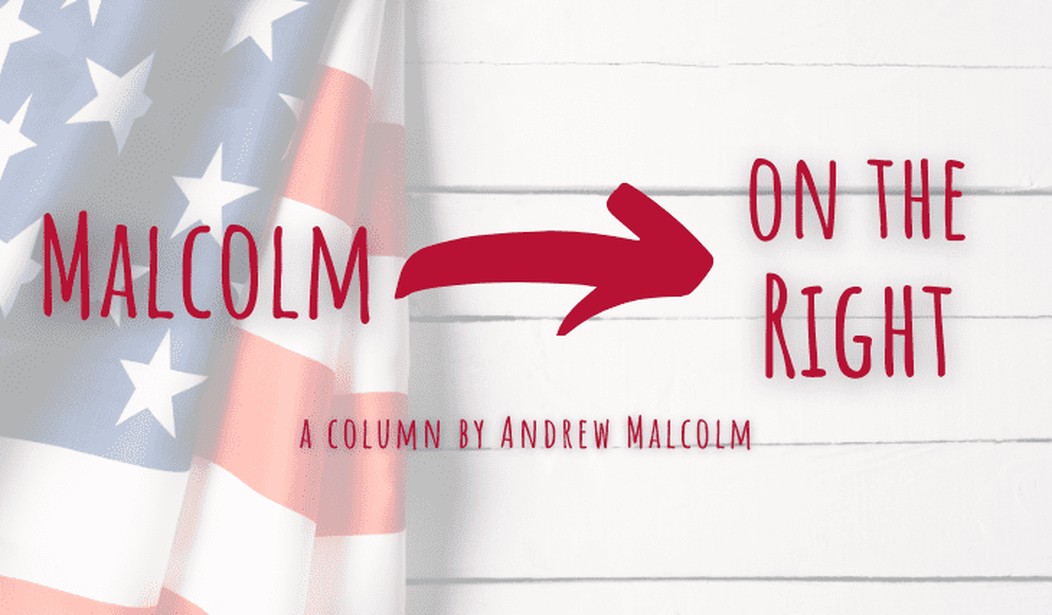Here’s a contrary thought: The banishment of Donald Trump from the omnipotent octopus of Big Tech’s social media is actually good for his return to presidential politics, if indeed he’s serious about pulling off a Grover Cleveland-style return in 2024.
The absence of a steady stream of his angry, indulgent tweets from the online consciousness of most Americans allows that tedious torrent of tumult to drift into the foggy memories of an inattentive nation that grew tired of it, despite Trump’s numerous policy successes.
Think of the promised demise of homicidal ISIS, income tax cuts that let millions keep more of their earnings to spend and save, deregulation that prompted vast new business investments, the broken logjam in the Mideast peace process, an unexpected energy independence, the explosion of new jobs, the historic decline in unemployment — especially among Blacks and Hispanics, rebuilding of the military, a hopeful opening to the goofball in North Korea.
And even when the Chinese virus blindsided the overdue economic recovery that Obama and Biden had promised 11 years ago, as well as Trump’s cruise to reelection, he engineered and drove an amazingly quick vaccine invention that Biden is now taking credit for.
More importantly perhaps, the enforced absence of the former president’s mean tweets deprives the media of its overused bludgeon against Trump. And it allows the public to focus on the disturbing ineptness and glazed eyes of the “shovel-ready” ex-vice president.
Electing someone as confused and cloistered as the 78-year-old Biden is what happens when a majority votes against one guy we don’t think we like, instead of for someone who presents a gaffe-y but benign presence.
We end up with an immense but phony stimulus package that’s really a liberal wet dream of unrelated spending, with an exploded national debt our grandchildren will never pay, an end to energy independence, an uncontrolled invasion of illegal immigrants, and looming tax increases of some $4 trillion, the largest in modern history.
Reading the words printed out for him, the president assures us such levies won’t really cost anyone anything. And the sympathetic media passes along that assurance as if it’s true, because they want it to sound so.
The bad news is inklings of inflation, given Biden’s beyond-massive spending, and an awful April jobs report of only 266,000 new hirings, as businesses pause to contemplate the president’s proposed corporate tax hike of one-third, from 21 percent to 28.
That media also wants Republicans to be at war with each other. As we chronicled here in recent weeks, both parties are currently going through the throes of reinventing themselves, as they’ve done occasionally for generations.
The triad of octogenarian Democrats running the House and taking up Senate seats are sitting atop a simmering cauldron of younger, ambitious, frustrated party members who can’t get past the slow-moving old-timers who’ve become too fond of power and its perks.
Now, personally, I can think of few things I care less about than the intramural struggles of members of Congress to sit in a larger chair. I didn’t care who sat atop the Stamp or Dance clubs in high school either.
The media, naturally, ignores conflict among liberals and progressives in Democrat caucuses.
But whoa, boy, look at all the meaningless fighting among House Republicans, who are so messed up they gained 10 seats to come within five of ousting Nancy Pelosi as Speaker last fall, all while losing the presidency.
With history as a compelling guide and a doddering president as party leader, Democrats face another historic annihilation in the 2022 midterms. Ninety-percent of the time, a president’s party loses House seats in his first midterm, which becomes an opening verdict on that White House.
In 1994, Bill Clinton lost 54 House Democrats. Remember the Contract with America? In 2010, Republicans seized the seats of 63 of Obama’s House supporters, worst shellacking in decades. Remember ObamaCare they had to pass before reading, and a trillion-dollar stimulus that went to union pals?
With the less than dynamic duo of Joe Biden at 79 by then and Nancy Pelosi at 82, a midterm success today seems the GOP’s to lose.
So, the party of Lincoln must be described as in disarray in the current flurry of media stories about Wyoming’s Liz Cheney. Even as the No. 3 in GOP House leadership, she was among a handful of Republicans who voted to impeach Trump. In today’s partisan world, that’s clearly treasonous, not possibly conscience.
Cheney has also criticized him often, recently for his unproven claims of vast voter fraud in November. Let’s admit it is conceivable that, on occasion, an actor in D.C. genuinely believes what they say in public. Not likely, maybe, but conceivable.
It is also conceivable, when they run against the contemporary political grain of their own colleagues, that they have another goal in mind, a longer-term plan to separate themselves now — perhaps for a time when a controversial, 73-year-old ex-president does not hold the same party sway as Trump does now.
Last week, Minority Leader Kevin McCarthy was “caught” on a hot mic saying he was tired of Cheney’s poor team play.
I’m willing to bet one of those trillion-dollar stimulus packages that was no accident, but part of momentum-building to oust Cheney. Her replacement would likely be Elise Stefanik, a rising star whose past Trump criticisms are forgotten for now.
Which brings us to Trump, a fascinating and unique political animal. He built an impressively loyal, conservative political base by voicing the anger and frustrations of millions with pretty much everyone in the Washington Swamp. And in 2016 he got just enough votes in just the right places to win a stunning upset.

He played to that audience relentlessly and effectively. Last fall, while Biden regularly knocked off for the day at 9 a.m., the indefatigable, 73-year-old Trump was doing four or five major rally speeches in as many states every day.
Unfortunately for his political fortunes, Trump did not seek to broaden his appeal, perhaps by moderating his outbursts just a little over time. This gave media ample ammunition to criticize. And the more Trump rallied loyalists, the more others out of turmoil fatigue drifted toward a mute Biden whose silence gave them little reason to dislike.
It’s unusual for defeated presidential candidates to hang around and tantalize both fans and opponents with a possible return. Only Democrat Cleveland has pulled that off in 1884, losing in 1888, then winning again in 1892.
Much depends on the results of 2022. If Trump is active and, as expected, the GOP does well, that could propel him toward a 2024 run, especially if a shaky Biden at 81 survives for a reelection try, or if an uncertain Kamala Harris inherits the nomination.
Because of their devastation in the 2010 election at both state and federal levels, Democrats’ farm team system is weak.
If Trump backs off to enjoy his wealth, then the Republican field opens wide. Democrats tend to prefer senators as candidates—Biden, Obama, Kerry, Gore, Mondale, Humphrey. Republicans often go for governors as candidates—Reagan, Bush, Romney.
One possibility then would be Florida’s Gov. Ron DeSantis. Or Nikki Haley. But there’s also Tom Cotton, Josh Hawley, Rick Scott, Tim Scott, all senators.
Or by then, the GOP candidate field might include someone who’d positioned themselves as an unTrump. Maybe a woman. Possibly, say, from Wyoming.













